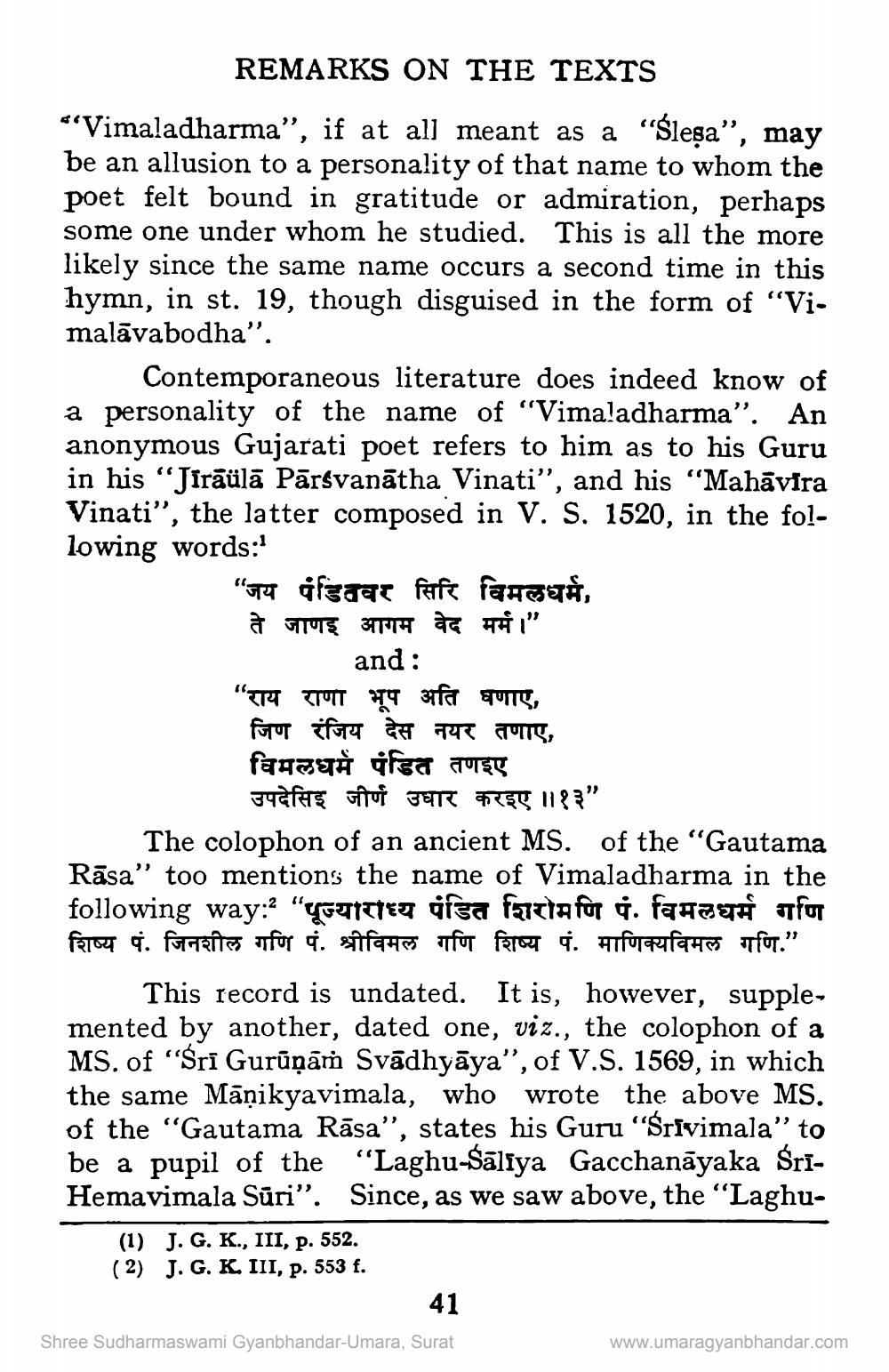________________
REMARKS ON THE TEXTS
“Vimaladharma”, if at all meant as a "Ślesa”, may be an allusion to a personality of that name to whom the poet felt bound in gratitude or admiration, perhaps some one under whom he studied. This is all the more likely since the same name occurs a second time in this hymn, in st. 19, though disguised in the form of "Vi. malāvabodha”.
Contemporaneous literature does indeed know of a personality of the name of "Vimaladharma”. An anonymous Gujarati poet refers to him as to his Guru in his “Jirāülā Pārsvanatha Vinati”, and his "Mahāvíra Vinati”, the latter composed in V. S. 1520, in the following words:
"pota afacer fifT FERGETÀ, ते जाणइ आगम वेद मर्म।"
and: "राय राणा भूप अति घणाए, जिण रंजिय देस नयर तणाए, विमलधर्म पंडित तणइए
उपदेसिइ जीर्ण उधार करइए ॥१३" The colophon of an ancient MS. of the “Gautama Rāsa" too mentions the name of Vimaladharma in the following way:2 "YFTITIET gisa fatta for j. fafa tfur शिष्य पं. जिनशील गणि पं. श्रीविमल गणि शिष्य पं. माणिक्यविमल गणि."
This record is undated. It is, however, supple. mented by another, dated one, viz., the colophon of a MS. of "Sri Gurūņām Svādhyāya”, of V.S. 1569, in which the same Māņikyavimala, who wrote the above MS. of the “Gautama Rāsa”, states his Guru “Srivimala” to be a pupil of the "Laghu-Saliya Gacchanāyaka ŚrīHemavimala Sūri”. Since, as we saw above, the "Laghu
(1) J. G. K., III, p. 552. (2) J. G. K. III, p. 553 f.
41
Shree Sudharmaswami Gyanbhandar-Umara, Surat
www.umaragyanbhandar.com




